 Image search results - "emigration" Image search results - "emigration" |

Kobe Center for Overseas Migration and Cultural Interaction was originally the National Emigration Center (国立移民収容所) where Japanese immigrants stayed for orientation before traveling mainly to South America (especially Brazil) by boat.The Emigration Center was used from 1928 to 1971 and it's Japan's only surviving building used for sending Japanese immigrants. Later renamed Kobe Emigrant Education Center and then Kobe Emigrant Assistance Center and Kobe Emigration Center (神戸移住センター).
|
|

This was where the Japanese immigrants would stay for up to 10 days to prepare for their long boat journey and move to South America.Today, the center is partially a museum where a few of the old rooms used by the emigrants have been restored. Other rooms are rented, including an event hall, meeting rooms, and gallery spaces. It includes a consultation center for South American residents of Kobe.
Museu da Emigração e Centro de Intercâmbio Cultural de Kobe
|
|

During World War II, the facility was used by the Japanese military. Then it became a school for hospital nurses. Today, the building is a South America emigration museum and the base for the Kansai Brazilian Community.There are exhibition rooms showing Kobe's history of Japanese immigration, especially to South America. Art studios, art gallery spaces, and meeting rooms are also provided for cultural exchange.
|
|

It is also has a consultation center for South American residents of Kobe. Operated by the city of Kobe, the current facility opened on June 3, 2009.15-min. walk from JR Motomachi Station (East Exit) on the JR Tokaido/Kobe Line. Walk straight along Koikawa-suji road (鯉川筋). Or 10-min. walk from Kencho-mae Station on the subway line. From JR Shin-Kobe Station (shinkansen), 10-min. taxi ride.
|
|

Monument for the "Birthplace of Japan's Emigration to Brazil" (ブラジル移民発祥の地)
|
|

Entrance.Open 10:00 am -5:00 pm (enter by 4:30 pm), closed Mon. (open if a national holiday and closed on Tue. instead) and December 29 to January 3. Admission: Free
|
|

Portuguese notices.
|
|

The 1st and 2nd floors have the emigration exhibition rooms. The 3rd floor is mainly offices of local Brazilian groups, and the 4th floor has rented studios for artists.
|
|
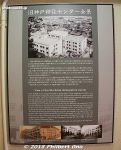
Old Kobe Immigration Center.
|
|

Map of Kobe Port on the floor.
|
|

Room showing farm tools.
|
|

Farm tools
|
|

Emigrant ship to South America.
|
|

Travel routes from Japan to South America.
|
|

It took over 50 days to travel from Japan to South America.
|
|

History of the emigrant center.
|
|
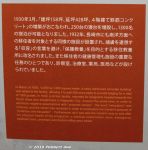
History of the emigrant center: 1930s
|
|
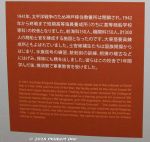
History of the emigrant center: 1940s
|
|
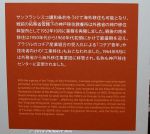
History of the emigrant center: 1950s-60s
|
|
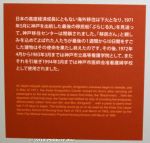
History of the emigrant center: 1970s-80s as a School of Nursing.
|
|
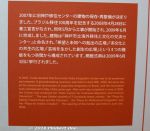
History of the emigrant center: 2007-2009
|
|

Statue of emigrants to Brazil. This same statue also stands at Meriken Park in Kobe.
|
|

Pictures of emigrants.
|
|

Exhibition room
|
|
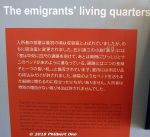
Emigrant's living quarters.
|
|
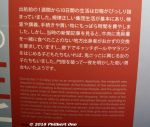
Life in the emigration center.
|
|

Lodging facility reconstructed here.
|
|

This is how the sleeping quarters looked like at the Kobe emigration center.
|
|

This is how the sleeping quarters looked like at the Kobe emigration center.
|
|

This is how the sleeping quarters looked like at the Kobe emigration center.
|
|

Japanese language textbooks.
|
|

Sports equipment.
|
|
|
|

Emigrants' luggage.
|
|

Electronical appliances.
|
|

Vintage camera
|
|

Corridor on an upper floor.
|
|

Artist studio
|
|

3rd floor
|
|

Exhibition room showing emigration photos.
|
|

Nice stairs
|
|
|
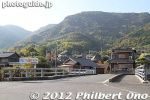
From the bus stop, cross this bridge over a river.
|
|
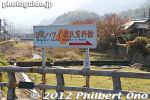
The sign points the way.
|
|
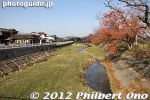
Cross the bridge over the river.
|
|
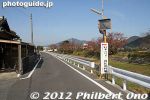
Then turn left as the sign says.
|
|
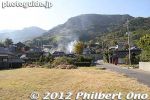
Museum up ahead.
|
|
|
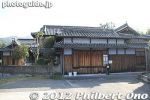
The Museum of Japanese Emigration to Hawaii.
|
|
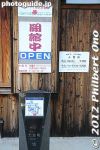
Go right for the front entrance.
|
|
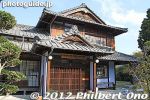
The museum is a large, two-story, Japanese-style house donated in 1997 by the family of Fukumoto Choemon (1881-1970) who emigrated to California and became successful and rich enough to build this house after returning to Japan. The museum opened in 1999.
|
|
|
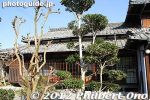
The museum is a spacious Japanese-style house.
|
|
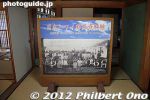
The museum is full of panel exhibits, mementos, artifacts, old books, and scrapbooks. It had a lot more than I had expected.
|
|

The museum staff person there could immediately tell that I was from Hawai'i even though I had said little more than "Hello" in fluent Japanese.
|
|
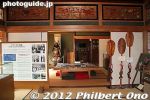
He knew immediately that I was from Hawai'i. That made me feel good actually, to know that I still haven't lost my Hawaiian traits even after living in Japan for many years.
|
|
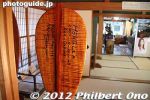
Oar from the Hokule'a signed by Nainoa Thompson when they visited Suo-Oshima in May 2007. That was a big event for the island and the Hawaiian community in Japan. I saw the Hokule'a only when they arrived at Yokohama.The Hokule'a is a traditional canoe where they use only the stars, wave motions, and bird observations for navigation like they did in ancient times. Nainoa was a pioneer in resurrecting and mastering this ancient form of navigation. You can read about their adventures on Suo-Oshima here, from May 20:
|
|

People from Suo-Oshima were among the first boatload of Kan'yaku Imin immigrants to Hawai'i in 1885. They emigrated due to dire economic conditions on the island.
|
|
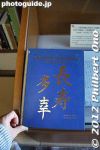
All the books in the museum are in open stacks where you can pull it out and read freely. Great for AJA researchers.
|
|
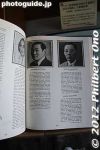
The scrapbooks and other delicate materials should be digitized though, something which they haven't done yet.
|
|
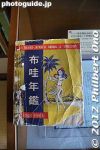
Old directory of all Japanese and Japanese-Americans living in Hawai'i. Never knew about this book.
|
|
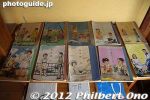
The museum also has two rooms full of Japanese school stuff. One room is full of books, scrapbooks, etc., donated by Ichisaburo Nakamura. He was a member of the Hawaii Kyoiku-kai (education council) which developed and published Japanese school textbooks.One of his scrapbooks had group photos of the Hawaii Kyoiku-kai who met every summer. I could recognize some of the faces. They were mainly Japanese school principals/teachers in Hawai'i. I spent a good amount of time in that room alone. Another room displayed old Japanese school textbooks including those published in Japan. I remember some of them from Japanese school and UH Manoa. Amazing to see all of them in one room.
|
|
|

View of Suo-Oshima from the 2nd floor of the museum. The island is quite well populated with houses and fishing ports in many locations.
|
|
|
|